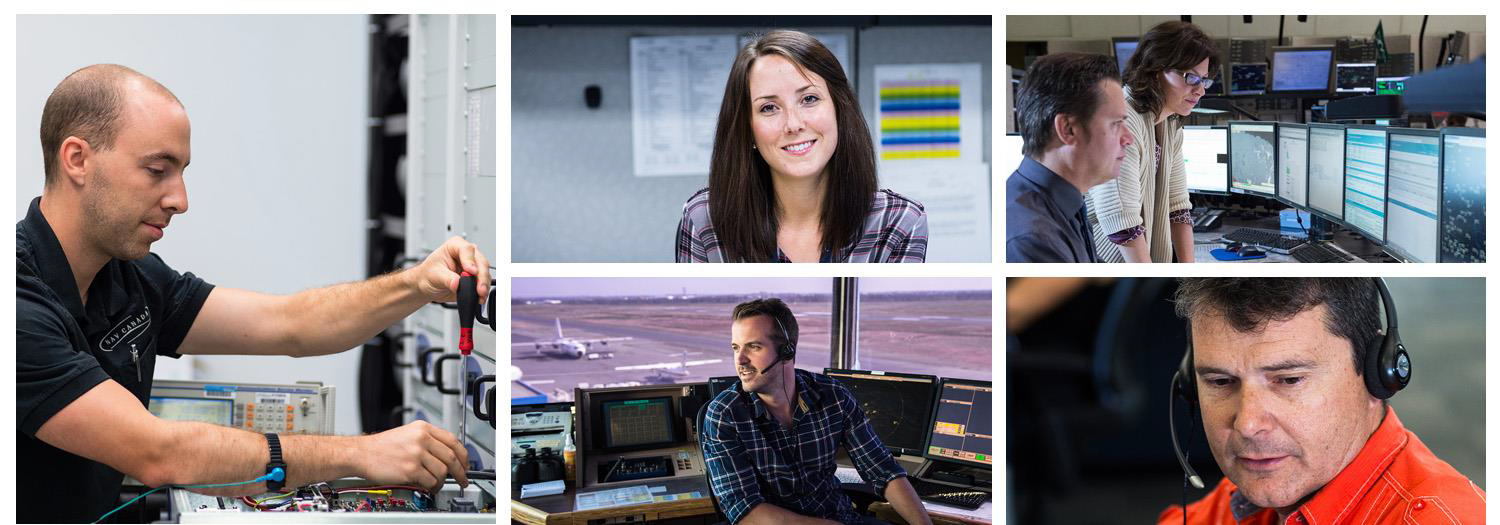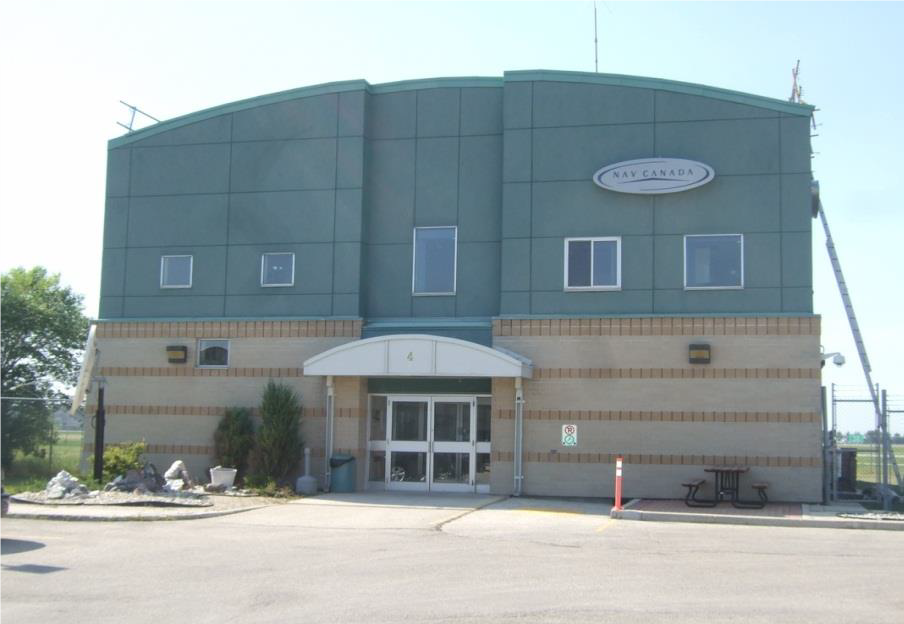Air Traffic Specialists Association of Canada ATSAC
• Approximately 650 specialist working in 55 AAS or AAS/RAAS units, 8 FIC’s, one IFSS, and 20 non-operational members in training and support positions.
• Units are located from the Pacific to the Atlantic to the Arctic oceans. Montreal FIR provides bilingual services within the province of Quebec.
• One collective agreement with a seniority bidding article allowing movement between disciplines causes logistic and training challenges.
ATSAC’s Role
Mission Statement:
The purpose of ATSAC is to represent the members in Collective Bargaining and in all other relations with their employer, to further the professional status of its members, to enhance its stature and to promote aviation safety nationally and internationally.
ATSAC Initiatives
• Participating in technological changes with Nav Canada through the Technology Working Groups.
• Attempting (again) to get runway designation authority and control of aircraft on manoeuvring areas for FSS.
• Current CA expires in 2017. Bargaining to begin in October of this year.
• Participation on UNIFOR’s newly formed Aviation Council.
• In the interests of aviation safety and consistency of service: Recognition of our role in ANS by inclusion of FISO/FSS procedures in Air Traffic Management (Doc 4444).
For further information, visit our website www.atsac.com
Email: president@atsac.com
NAV CANADA
Flight Services and Flight Information
About NAV CANADA
• Private, non-share capital company
• 2nd largest ANSP in the world
• 12 million aircraft movements annually – 40,000 customers
• 18 million square km of airspace
• Regulated by the Government of Canada on safety performance
Our People
4,600 employees across the country
• Air Traffic Controllers
• Flight Service Specialists
• Electronics Technologists
• Engineering and IM
• Corporate Functions
Our Services
• Air Traffic Control
• Flight Information
• Weather Briefings
• Aeronautical Information
• Airport Advisory Services
• Electronic Navigation Aids
Flight Services Specialists
Flight Services Specialists provide services to our customers using two different types of facilities:
Flight Information Centres (FIC) Flight Service Stations (FSS)
Flight Information Centres (FIC)
NAV CANADA has 8 Flight Information Centres with responsibilities for the provision of services in every Flight Information Region (FIR) across Canada.
Flight Information Centres provide:
• Interpretive in-depth pilot briefings pertain to the provision, or consultation on meteorological and aeronautical information to assist pilots in pre-flight planning.
• Flight planning services are provided to all pilots, IFR or VFR, and encompass domestic as well as international flight plans and itineraries. VFR Alerting services are the responsibility of the FICs, while IFR alerting services are provided by the ACCs.
• Enroute weather and aeronautical information services are provided using dedicated remote communications outlets (RCO) specifically designed for the provision of these services.
• Surface weather observing is provided in 5 FICs and provide METAR and SPECI reporting as well as continuous weather monitoring.
• Coordination with customers is provided in person or via a 24 hour phone in service. Online flight planning services are also available.
• Support is provided to other ATS units (FSS, ATC, Tech Ops) and to Community Aerodrome Radio Stations (CARS)
Community Aerodrome Radio Stations(CARS)
CARS provide aviation support services at certain isolated aerodromes in the Arctic and northern Quebec. FIC specialists provide CARS with aeronautical and meteorological support.
Flight Service Stations(FSS)
NAV CANADA operates 55 Flight Service Stations across Canada who provide aerodrome advisory and vehicle control services among other duties
Flight Service Stations provide:
• Aerodrome Advisory Services
• Vehicle Control Services
• ATC support
• Local weather and aeronautical information
• Surface weather observing
• Equipment monitoring
• Emergency services
While the procedures provided at Flight Service Stations are generally standard across the country,
there can be great diversity between stations due to geography, airspace and types of aircraft movements.
A typical example of an FSS is a station in Class E airspace surrounded by uncontrolled airspace with a mix of commercial and general aviation traffic. The FSS often has a control zone associated with it and coordinates with ATC regarding IFR operations.
Areas surrounding some Flight Service Stations are more complex due to geographical location and a more diverse airspace structure.
Mirabel FSS is situated in Class E airspace with an associated control zone out to 7NM and 2000 ASL with a transition area between 7 and 12NM between 1300-2000 ASL.
The shape of the zone is irregular due to the close proximity of Montreal Pierre Eliot Trudeau Airport and Mirabel FSS coordinates closely with Montreal terminal control. Many procedures at Mirabel are coordinated with Montreal ATC to ensure safe and efficient operations.
Aerodrome Advisory Service
One of the main duties of Flight Services Specialists stationed at FSS is the provision of aerodrome advisory services. These services are delivered via voice communications and include the provision of the following information:
• Runway information – if a runway is “active” or “preferred”
• Wind direction and speed
• Altimeter – in inches of mercury
• Air and ground traffic – for aircraft inbound to, outbound from, transiting, or in the vicinity of the aerodrome
• Aerodrome conditions
• Weather conditions
• Other information such as wake turbulence, hazardous situations, parachute operations, wildlife and bird activity, laser operations, etc.
Remote Aerodrome Advisory Service (RAAS)
NAV CANADA provides Remote Aerodrome Advisory Services (RAAS) at 38 locations across Canada. These remote services are provided by 23 different Flight Service Stations, some of which provide services to multiple sites, including some ATC Towers during overnight operations.
Remote Aerodrome Advisory Service is provided at select aerodromes to provide information that is essential for the safe and efficient movement of arriving and departing aircraft.
• The services provided at these aerodromes are very similar to those provided at FSS, but are delivered remotely and are more restrictive in some areas.
• Due to the unavailability of visual confirmation of aircraft and vehicle movement, advisory procedures may be more restrictive to ensure safety.
• Additionally, vehicle services are advisory in nature with the responsibility for compliance resting with the aerodrome operator.
Gander International Flight Service Station(IFSS)
• Gander International Flight Service Station (IFSS) provides services for pilots travelling North Atlantic and Polar routes into and out of Canadian airspace. These services include:
• International air-ground communications via HF/VHF including relay of ATC clearances and instructions, and the relay of position reports (AIREPS) and company messages. These services comprise the majority of the duties provided by Gander IFSS and average over 850,000 contacts annually.
• Provision of meteorological and aeronautical information
• Coordination of flight plan messages
• Provision of assistance during aircraft emergencies
Workload
• IFSS averages over 850,000 aircraft contacts annually -mainly over NAT and Polar tracks via HF/VHF/SatCom. The largest unit in ATSAC with 49 staff.
• FIC’s workload includes pilot briefing, FISE, NOTAM, etc. Staffing ranges from 7 in Whitehorse to 35 in Quebec. Workload is varied and difficult to quantify. Services are provided mainly via telephone and RCO. For the 12-month period ending Feb 2016, FIC’s handled approximately 500,000 phone contacts and 430,000 FISE contacts AAS & AAS/RAAS traffic ranges from 10,000 to 80,000 movements per year combined IFR/VFR/Military. The combined total for AAS (including RAAS) for the 12-month period ending June 2016 was steady at 1.6 million movements. Radar/MLAT is utilized where available.
The Future
In the effort to improve safety, efficiency and customer service, a number of initiatives are being implemented or investigated:
• Modernization of technologies available to FIC and FSS specialists
• Increased customer and inter-unit communication
• Increased ICAO compliance (NOTAMWiz, SNOWiz)
• Runway assignation for FSS specialists
• Ground control of aircraft at FSS




















